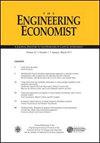政府补贴私人参与基础设施项目的最优资本结构
IF 1.2
4区 经济学
Q4 BUSINESS
引用次数: 6
摘要
摘要政府补贴的私人参与基础设施项目是吸引私人投资者投资于具有高社会效益的财政上不可行的基础设施项目的一种解决方案。政府补贴PPI项目包括三个融资来源:政府补贴、股权和债务。对于政府补贴的PPI项目,必须确定政府补贴水平,才能确定最佳负债率。政府补贴水平过低可能导致金融机构无法将该项目存入银行,过高可能导致项目投资者获得高额超额回报。本文建立了合作博弈模型,即多变量博弈模型,以确定PPI项目谈判的四个主要决策变量——政府补贴、关税、债务比率和利率——的最优解。该三方博弈模型旨在确定优化财务上不可行的PPI项目总收益的条款和条件,从而使PPI项目谈判取得成功。台湾高雄缆车项目用于示范。分析结果表明,该模型可以确定政府补贴、股权和债务三种融资来源的最优解。本文章由计算机程序翻译,如有差异,请以英文原文为准。
Optimal capital structure of government-subsidized private participation in infrastructure projects
Abstract A government-subsidized private participation in infrastructure (PPI) project is a solution to attract private investors to invest in financially non-viable infrastructure projects with high social benefits. A government-subsidized PPI project comprises three financing sources: government subsidy, equity, and debt. For government-subsidized PPI projects, the government subsidy level must be determined before the optimal debt ratio can be determined. A government subsidy level that is too low may lead to the project being non-bankable for financial institutes and a level that is too high may result in high excess returns for project investors. This paper develops cooperative game models, which are multiple–variable game models, to determine optimal solutions for four major decision variables – the government subsidy, tariff, debt ratio, and interest rate for project negotiation for PPI projects. This three–party game model is developed to identify terms and conditions that optimize the total benefits of financially non-viable PPI projects, which can lead to successful PPI project negotiations. The Kaohsiung cable car project in Taiwan is used for demonstration purposes. The results of the analysis show that optimal solutions for the three financing sources - government subsidy, equity, and debt - can be determined by the models.
求助全文
通过发布文献求助,成功后即可免费获取论文全文。
去求助
来源期刊

Engineering Economist
ENGINEERING, INDUSTRIAL-OPERATIONS RESEARCH & MANAGEMENT SCIENCE
CiteScore
2.00
自引率
0.00%
发文量
14
审稿时长
>12 weeks
期刊介绍:
The Engineering Economist is a refereed journal published jointly by the Engineering Economy Division of the American Society of Engineering Education (ASEE) and the Institute of Industrial and Systems Engineers (IISE). The journal publishes articles, case studies, surveys, and book and software reviews that represent original research, current practice, and teaching involving problems of capital investment.
The journal seeks submissions in a number of areas, including, but not limited to: capital investment analysis, financial risk management, cost estimation and accounting, cost of capital, design economics, economic decision analysis, engineering economy education, research and development, and the analysis of public policy when it is relevant to the economic investment decisions made by engineers and technology managers.
 求助内容:
求助内容: 应助结果提醒方式:
应助结果提醒方式:


